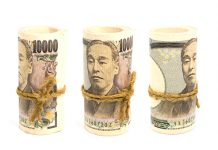- European equity markets recovered from opening weakness and currently trade with small gains. US stock markets opened mixed. The S&P and the Dow show marginal gains. The Nasdaq opened little changed.
- US producer price inflation surprised on the upside last month amid a rebound in oil prices driving up costs for businesses. The producer price index – a key measure of industrial inflation – was up 0.4% M/M in November. November NFIB Small Business Optimism unexpectedly surged to 107.5, the highest level since 1983.
- EU countries have toughened their stance on Brexit negotiations, making clear that talks on a future EU-UK relationship will not begin until March, and insisting that Britain will stay fully covered by EU rules during a transition period after it leaves the bloc in 2019.
- British inflation unexpectedly rose to its highest level in nearly six years in November, tightening the post-Brexit vote squeeze on households whose spending is the main driver of the country’s economy. Consumer price inflation hit an annual rate of 3.1% in November, pushed up by air fares, computer games and the price of chocolate.
- The mood among German investors worsened more than expected in December, a ZEW survey showed, reflecting uncertainty over the policies of a government yet to be formed, Britain’s expected exit from the EU and reforms in the bloc. The expectations component declined from 18.7 to 17.4. The current situation index rose from 88.8 to 89.3.
- Swedish inflation came in higher than the central bank’s estimate for a second consecutive month, giving policy makers an excuse to start winding back their extraordinary stimulus measures. Underlying consumer prices, which adjust for changes in mortgage costs, rose 2.0% in November, beating the 1.8% consensus.
- Europe’s energy markets were rattled for a second consecutive day after an explosion at a natural gas hub in Austria threatened supplies already pinched from a closed pipeline in the North Sea and a cold snap across the continent.
Rates
Higher oil prices, strong data and recovering stocks
Global core bonds lost slightly ground today. The Bund opened stronger in line with gains for the US Note future on the back of Asian risk aversion. Several factors contributed to a change from the European start onwards. First European stock markets gradually recovered. Second, oil prices increased further as an explosion in an Austrian gas hub rattled European energy markets for a second consecutive day. Third, global eco data beat forecasts with upside CPI surprises in the UK and Sweden, higher PPI in the US, a stellar NFIB small business optimism and good German ZEW.
At the time of writing, the US yield curve bear flattens with yields 2.5 bps (2-yr) to 1.2 bps (30-yr) higher). Traders continue to put themselves in line with the FOMC’s scenario of 3 rate hikes next year. We expect tomorrow’s new dot plot to confirm this. The German yield curve bear steepens with yield changes ranging between -0.3 bps (2-yr) and +2.3 bps (30-yr). The German 10-yr yield is finally (slowly) moving away from 0.3% support. On intra-EMU bond markets, 10-yr yield spread changes versus Germany widen 3 bps for Portugal, Spain and Italy. Greece outperforms (-12 bps).
First details of next year’s Belgian funding plans appeared. The debt agency is aiming to use a new bond via syndication in Q1 2018 with a tenor of 15-year or more. They also plan to frontload issuance again and are readying a first ever green bond. Last year, Poland and France already did the same.
Currencies
USD holds cautious positive bias ahead of Fed decision
Markets showed no clear trend in Europe this morning. A very strong NFIB small business confidence and a higher than expected PPI finally tilted the intraday balance in favour of the dollar, but the moves remained modest ahead of tomorrow’s Fed decision. EUR/USD trades near 1.1740. USD/JPY holds in the mid 113 area.
Asian equities opened mixed, but lost ground as trading proceeded. There was no obvious driver. Oil extended its recent rebound, with Brent trading at the highest level in 2 ½ year, but there were again few spill-off effects on other markets. The trade-weighted dollar held near the highest level in two weeks. USD/JPY stabilized in the mid 113 area, despite softer equities. EUR/USD held in the 1.1775 area.
European equities lost temporary a few ticks after the open, but soon decoupled from the risk-off sentiment in Asia and returned back into positive territory. The Bund opened marginally stronger, but core yields soon bottomed. Changes in interest rate differentials were limited, but USD/German (EMU) spreads held at/close to the recent peak protecting the downside of the dollar. German ZEW investor confidence was close the expectations and no issue for markets. EUR/USD and USD/JPY held extremely tight ranges. If anything, the dollar received a cautious bid going into the start of the US trading session.
US NFIB small business confidence jumped from 103.8 to 107.5, the highest level since 1983! US producer prices also rose slightly faster than expected. Headline PPI rose 0.4% M/M and 3.1% Y/Y (from 2.8 %; 2.9% Y/Y was expected). One couldn’t expect PPI data to change market sentiment in a profound way ahead of tomorrow’s CPI and Fed policy decision, but the report didn’t pass unnoticed. US bond yields headed further north with the 2-year yield setting yet another cycle top (1.84 area). The dollar also gained a few ticks, in particular against the euro. EUR/USD trades in the 1.1745 area. USD/JPY showed little reaction and hovers in the mid 113 area. So, the dollar held up quite well today. EUR/USD even near last week’s pre-payrolls low (1.1730 area).
Sterling doesn’t profit from 3%+ UK inflation
Sterling showed a diffuse picture today. Overnight headlines from UK government members including Trade Secretary Liam Fox and Brexit minister Davis on the nature of last week’s Brexit/separation deal (non-legally binding) caused quite some nervousness amongst EU officials. Sterling trades with a slightly negative bias this morning, but the move had no strong momentum. UK headline inflation was higher than expected at 3.1% Y/Y. Core inflation was largely as expected (2.7% Y/Y). Sterling showed some nervous swings after the publication of the report, but again didn’t capture a clear trend. Investors probably assume that it will be difficult for the BoE to raise rates as long as real wage growth remains low/negative. EUR/GBP finally declined to the 0.88 area, partially inspire by the intraday decline of EUR/USD. Cable developed an erratic trading pattern in in the mid 1.33 area. Tomorrow, the UK labour market data, including the earnings data, will be published.













